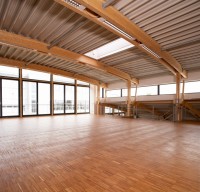Whether your building is vacant due to a sluggish economy or for some other reason, it’s important to ensure that it’s kept as safe as possible. Vacant commercial buildings can create a number of risk-related challenges. Regardless of whether your property is vacant for only a few days or a few months, the risks related to a vacant building can result in the potential for expensive losses and liability. By following the steps listed below, you can identify potential hazards and learn to reduce those risks while controlling losses.
- Notify your insurance company about the vacancy. This will help to ensure that property coverage can be continued. Ensuring that your property has the right insurance coverage will improve the likelihood that that you are adequately protected.
- Weather-related risks can be of particular concern for vacant buildings. To protect your property, consider installing low temperature alarms to help prevent damage from freezing temperatures.
- Maintenance is vital for all buildings, but becomes even more important when the building is vacant. Toward that end, be sure that all fire protection, sprinkler, and detection systems are kept in service. Make certain that all fire protection systems are serviced on a quarterly basis to ensure that they’re working properly.
- Make a point of inspecting the building roof, if it’s accessible, in order to evaluate it for potential exposure, such as vegetation growth, clogged roof drains, damage from recent storms, or even evidence of unauthorized access.
- It’s also a good idea to shut off all utilities that aren’t necessary for security or protection in the building. For instance, consider shutting off the supply line to the water heater.
- Be sure to conduct frequent walk-throughs of the property. This should be done at various times of the day, so that you’re able to note any changes that have taken place. Tour frequencies may vary based on the location of the property, but at a minimum, tours should be conducted once per week. High-value properties may require more frequent walk-throughs.
- Caulk the seams and cracks in all window frames and doors as well as siding, roofs, and vents. Doing so can help to make the building more energy efficient while also protecting it from weather-related damage.
- Insulate pipes and keep the gutters clean. This will help to prevent leaks that might go unnoticed in a vacant building, leading to serious damage.
- Consider hiring a guard service or ask the local police department if it can include the property in a regular nightly tour. This can help to deter potential vandalism of vacant properties.
- Remove any hazardous materials or debris from the building, including combustibles, chemicals, and pollutants that could present the potential for contamination, leaks, or fire.






